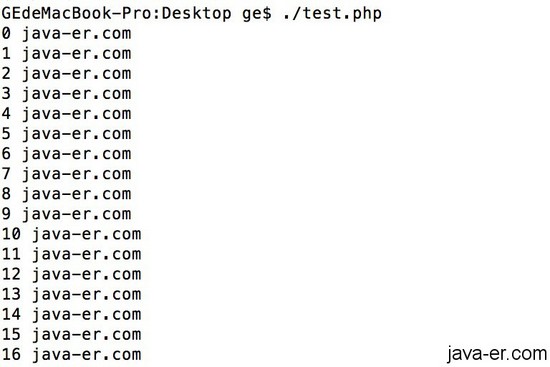溫馨提示×
您好,登錄后才能下訂單哦!
點擊 登錄注冊 即表示同意《億速云用戶服務條款》
您好,登錄后才能下訂單哦!
這篇文章主要介紹了php命令行中寫shell的示例分析,具有一定借鑒價值,感興趣的朋友可以參考下,希望大家閱讀完這篇文章之后大有收獲,下面讓小編帶著大家一起了解一下。
示例如下:
php -h Usage: php [options] [-f] <file> [--] [args...] php [options] -r <code> [--] [args...] php [options] [-B <begin_code>] -R <code> [-E <end_code>] [--] [args...] php [options] [-B <begin_code>] -F <file> [-E <end_code>] [--] [args...] php [options] -S <addr>:<port> [-t docroot] [router] php [options] -- [args...] php [options] -a -a Run as interactive shell -c <path>|<file> Look for php.ini file in this directory -n No configuration (ini) files will be used -d foo[=bar] Define INI entry foo with value 'bar' -e Generate extended information for debugger/profiler -f <file> Parse and execute <file>. -h This help -i PHP information -l Syntax check only (lint) -m Show compiled in modules -r <code> Run PHP <code> without using script tags <?..?> -B <begin_code> Run PHP <begin_code> before processing input lines -R <code> Run PHP <code> for every input line -F <file> Parse and execute <file> for every input line -E <end_code> Run PHP <end_code> after processing all input lines -H Hide any passed arguments from external tools. -S <addr>:<port> Run with built-in web server. -t <docroot> Specify document root <docroot> for built-in web server. -s Output HTML syntax highlighted source. -v Version number -w Output source with stripped comments and whitespace. -z <file> Load Zend extension <file>. args... Arguments passed to script. Use -- args when first argument starts with - or script is read from stdin --ini Show configuration file names --rf <name> Show information about function <name>. --rc <name> Show information about class <name>. --re <name> Show information about extension <name>. --rz <name> Show information about Zend extension <name>. --ri <name> Show configuration for extension <name>.
1.用php命令行的方式執行php腳本,例如/usr/bin/php test.php
縮寫 php test.php
test.php
<?php
for($i=0;$i<10;$i++){
echo $i;
echo '\n';
}
?>2.腳本開頭第一行寫上#!/usr/bin/php,然后可以把腳本設為可執行 chmod a+x test.php,之后就可以用命令行的方式直接執行腳本了,例如./test.php
#!/usr/bin/php
<?php
for($i=0;$i<10;$i++){
echo $i;
echo " java-er.com \n";
}
?>執行一小時,看看php會不會掛,我希望一個命令行可以跑到天荒地老
#!/usr/bin/php
<?php
for($i=0;$i<360;$i++){
echo $i;
sleep(10);
echo " java-er.com \n";
}
?>
3. 外部傳入參數
#!/usr/bin/php
<?php
var_dump($argc); //返回參數總個數
var_dump($argv);
exit;
?>
./test.php
int(1)
array(1) {
[0]=>
string(10) "./test.php"
}
./test.php a java php
int(4)
array(4) {
[0]=>
string(10) "./test.php"
[1]=>
string(1) "a"
[2]=>
string(4) "java"
[3]=>
string(3) "php"
}感謝你能夠認真閱讀完這篇文章,希望小編分享的“php命令行中寫shell的示例分析”這篇文章對大家有幫助,同時也希望大家多多支持億速云,關注億速云行業資訊頻道,更多相關知識等著你來學習!
免責聲明:本站發布的內容(圖片、視頻和文字)以原創、轉載和分享為主,文章觀點不代表本網站立場,如果涉及侵權請聯系站長郵箱:is@yisu.com進行舉報,并提供相關證據,一經查實,將立刻刪除涉嫌侵權內容。